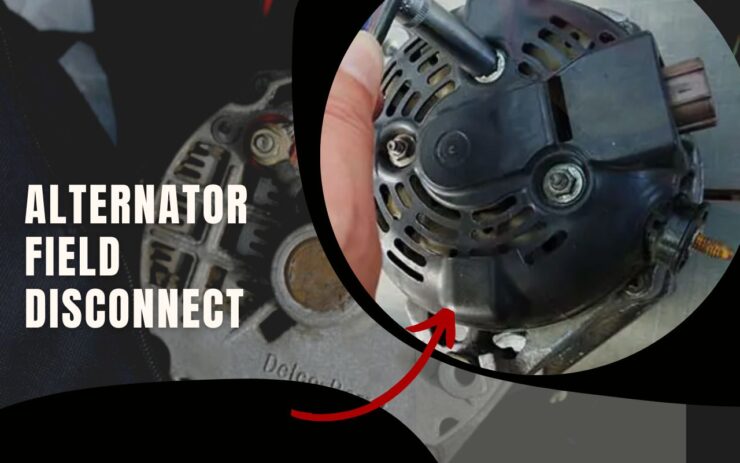A generator that converts energy into the alternating current is known as an alternator. Sometimes while converting, diodes that help the current to flow in one direction get burned because of sudden power cut off.
People use the alternator field disconnect switch to prevent this type of incident.
Now you must be curious about the alternator field disconnect switch. Don’t worry, we’ve got you covered!
So, what is the alternator field disconnect?
Alternator Field Disconnect is primarily a switch. When the battery is suddenly turned off while the alternator is working, the current has nowhere to go.
In such cases, the voltage can suddenly rise and cause a serious malfunction to the system. AFD switches create a path for the current and avoid sudden burning.
This is just the tip of the iceberg, there’s a lot more you don’t know about it. We have prepared a detailed discussion about AFD switches.
Sounds like something you’d be interested in learning more about? Then let’s dive into the article right away.
Table of Contents
ToggleWhat is Alternator Field Disconnect?
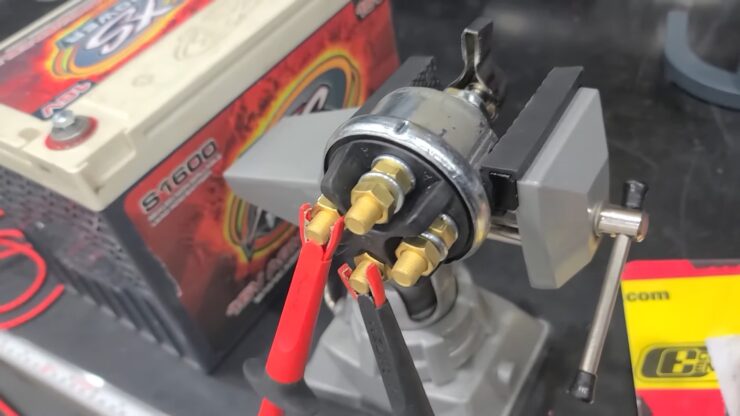
Alternator Field Disconnect is a separated single pole switch. Through this switch, the field current wire is connected to the voltage regulator wire.
The voltage of the alternator rises when the switch of battery is suddenly turned to ‘OFF’ when the alternator is running. This will quickly burn out the rectifier’s diodes.
And the alternator is ultimately damaged. This is why, from time to time, we find mercury outboards cranking but they won’t start. An alternator field disconnect (AFD) is used to prevent this. It essentially disables the alternator’s output.
How Does Alternator Field Disconnect Work?
Just like an AC generator, the alternator is also engine-driven. It is made up of electromagnets placed on a rotor.
Electromagnets are fueled by field currents to generate a magnetic field. While the rotor is spinning, the alternator produces alternating current. Diodes are used to make the current flow in one direction.
If it is turned off suddenly, the current that was converting at that time loses its path. Unless there’s an open path for the current to go, it will go towards diodes and burn them.
This can hamper the engine and cause the outboard motor not to start. The AFD switch in the alternator stops this from happening.
The AFD switch only closes after all the connections to the main switch have been closed. This leaves a path for the current to go into the AFD switch and prevent any unwanted outcomes.
Why Use An Alternator Field Disconnect in Your Boat?
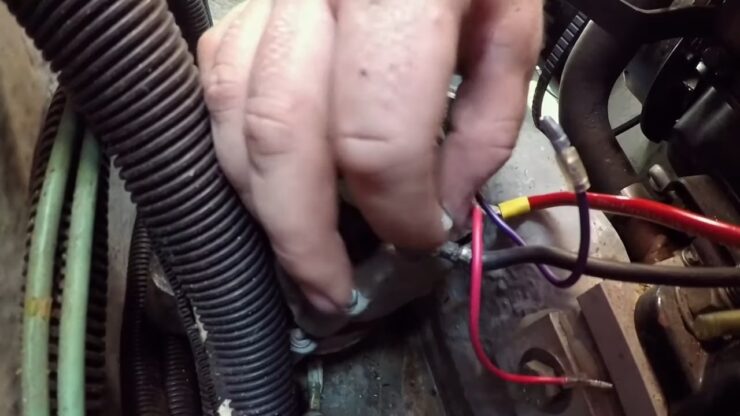
By using an alternator field disconnect, you can prevent this damage from occurring. The device is typically installed between the battery and the alternator.
When you shut off the engine or disconnect the battery, the device disconnects the alternator’s field circuit, which prevents voltage spikes from damaging the alternator and other electrical components.
In addition to protecting your electrical system, using an alternator field disconnect can also prevent dangerous situations.
For example, if the alternator’s voltage regulator malfunctions due to a sudden loss of electrical load, it can cause the alternator to overcharge the battery, which can lead to the battery exploding.
An alternator field disconnect is particularly important for boats that have sensitive electronic equipment, such as GPS systems, radios, and depth finders.
These devices are expensive to replace and can be easily damaged by voltage spikes.
The Risks of Not Using It?
The risks of not using an alternator field disconnect are significant. One risk is damage to the alternator and other electrical components.
When the alternator’s voltage regulator malfunctions, it can cause voltage spikes that can damage electronic equipment, such as radios, GPS systems, and depth finders. Replacing these items can be expensive and time-consuming.
Another risk of not using an alternator field disconnect is a battery explosion. When the battery is suddenly disconnected or the engine is shut off, the alternator’s voltage regulator may malfunction, causing the alternator to overcharge the battery. Overcharging can cause the battery to overheat, which can lead to an explosion.
Additionally, not using an alternator field disconnect can cause problems with your boat’s engine. Voltage spikes can damage the engine’s computer, which can cause performance issues and potentially costly repairs.
Is it Necessary on Newer Outboards?
Traditionally, alternator field disconnects were common on older outboard engines. However, newer outboards may not require this safety feature due to advancements in electrical systems.
Many newer outboards have more sophisticated voltage regulators that can handle the sudden loss of electrical load. In addition, newer outboards may have better-designed electrical systems that reduce the risk of damage to the alternator and other components.
That being said, it’s always best to follow the manufacturer’s guidelines for your specific outboard engine. If the manufacturer recommends an alternator field disconnect, it’s best to follow that recommendation to ensure your electrical system stays in top condition.
Additionally, it’s important to note that even if your outboard engine doesn’t require an AFD, you should still take care when disconnecting the battery or shutting off the engine.
Abruptly disconnecting the battery or shutting off the engine while the alternator is still generating power can still cause damage to the electrical system.
Can You Install It Yourself?
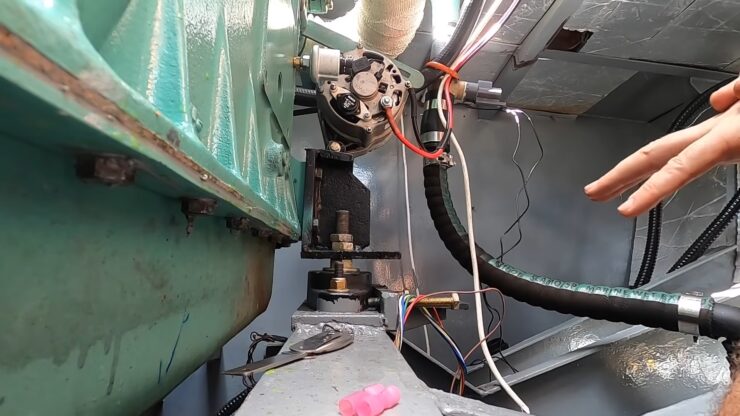
Installing AFD in your boat can be a simple task, but it does require some technical knowledge and expertise.
If you’re comfortable working with electrical systems and have some experience with boat maintenance, you may be able to install an alternator field disconnect yourself.
However, if you’re unsure or have limited experience, it’s best to seek professional assistance.
Before attempting to install an alternator field disconnect, you should first consult your boat’s owner’s manual to ensure that one is needed and to understand the specific installation requirements for your boat’s make and model.
You should also make sure you have all the necessary tools and equipment, including a voltmeter and wiring diagram.
The installation process typically involves disconnecting the battery and alternator, locating the appropriate wiring, and installing the disconnect device between the battery and alternator.
This may involve splicing wires, so it’s important to follow the wiring diagram carefully to ensure the correct connections are made.
Once the AFD is installed, you should test it to ensure that it’s working properly. This involves measuring the voltage output from the alternator with and without the disconnect engaged. If the voltage remains the same, the disconnect is functioning correctly.
What’s The Alternate Option of AFD Switch?
People usually face one common problem while installing an AFD switch. That is, it works only with regulated alternators which are external. Because the field wire is only accessible to these alternators.
And even though you have regulated alternators, you need to make some alterations to the wiring of the boat. You need to change the field wire direction from regulators to the alternator and make a redirection via the battery switch.
It is this extra bit of installation work that normally drives people away from AFD. There is, however, another option. You can run the output wire directly to the battery. This will protect the alternator from accidents.
Just like it’s important to decide between Volvo Penta and Mercruiser motor while buying a new boat, it is also important to buy an alternator with the AFD switch.
AFD switch is a very important feature of an alternator. Not only does it save diodes from burning it also ensures your on-boat safety while sailing.
FAQs
What is the maximum time a car can operate without an alternator?
Because many components will run faster than in older cars, a 12-volt battery will last around 30 minutes to an hour without lights or air conditioning.
Starting a car requires a lot of strength. You should either get a more powerful battery or repair your alternator.
How do you use a screwdriver to inspect an alternator?
Check for magnetism in the alternator. Place the metal end of a metal screwdriver on the alternator shaft which is near the bolt.
If the screwdriver is drawn towards the alternator, it is working properly; however, if it is not instantly drawn to the shaft, it is not working.
Can we utilize an alternator as a motor?
We’ve discovered that it works just as well as a motor whether powered by a 36V or 48V supply, as long as a powerful controller is utilized.
The motor is less efficient than a permanent magnet since it must consume that power, but the price of a discarded alternator is hard to beat.
What will the cost of replacing the alternator be?
When your automobile begins to have electrical issues, it’s time to replace the alternator. A new alternator along with servicing will the total cost will be around $500 to $1000.
Conclusion
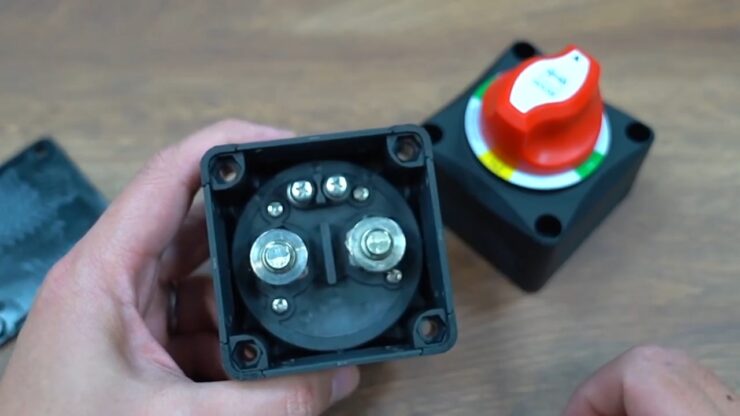
That’s all we had for the alternator fields disconnect. We hope this article has answered all of your questions.
For further queries, don’t hesitate to ask a professional. It’s always better to take professional help rather than going about electrical things you don’t have sufficient knowledge of. Till then best wishes and happy sailing!
I’m Liam Jackson, the proud owner and driving force behind KayakPaddling.net. Born somewhere in the expansive beauty of the United States, I’ve nurtured a lifelong passion for kayaking and fishing that has led me to explore the far corners of our nation’s waterways.
Related Posts:
- 16 Best Kayak For Beginners 2024 - Kayaking Adventure Gear
- 12 Best Beach Wagons & Carts 2024 - For All-Terrain
- How to Stay Safe on Slow Moving Waters When Paddle Boarding?
- 10 Best Fish Finders Under $200 2024 - Top Affordable Picks
- 13 Best Fishing Kayak Under $500 in 2024 -…
- What To Wear Kayaking - Safe Kayaking Adventure

